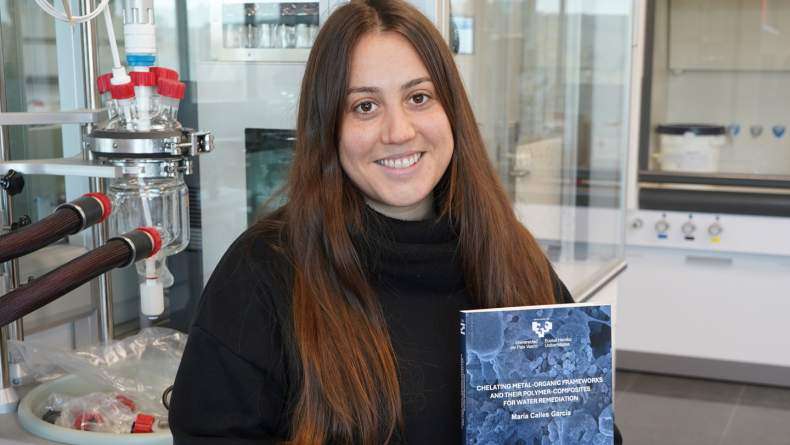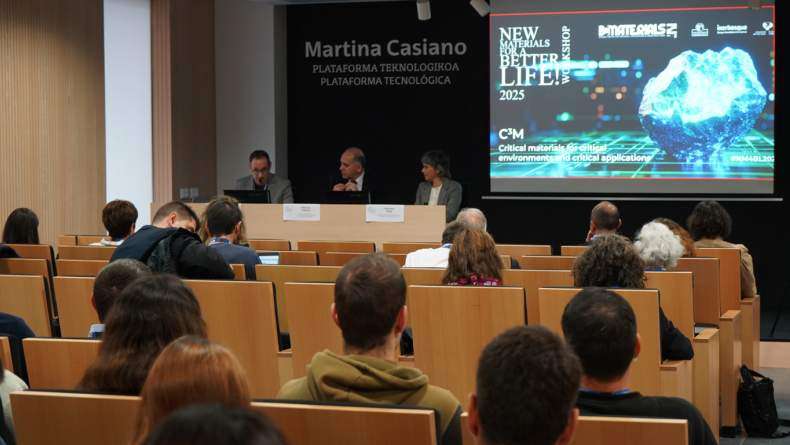BCMaterials Fortnightly Seminars #32

“Magnetic and structural characterization of magnetic nanoparticles biosynthesized by magnetotactic bacteria”
LOURDES MARCANO
(UPV/EHU)
Magnetotactic bacteria are a microorganism that can align and navigate in geomagnetic fields thanks to the internal presence of a chain of magnetic nanoparticles, also called magnetosomes. These chains play the role of a compass needle and allow to the bacteria to orientate in the Earth´s magnetic field to find a more comfortable and richer in nutrients environment [1].
The last years have been witness of the importance of the magnetic nanoparticles in different research areas. The size, shape or the magnetic behaviour of the nanoparticles is crucial for their future applications. Controlling these factors is one of the main challenges of the synthesis methods. The high biologically control imposes by the bacteria leads to magnetosomes with well-defined properties. The type, the shape and the size of the magnetic nanoparticles are determined by the bacterial species used [2]. In our case, we work with the magnetotactic bacteria Magnetospirillum gryphiswaldense, a spirillum shape bacteria which synthesize cubo-octahedral magnetite nanoparticles of 45 nm with a narrow size distribution. Moreover, magnetosomes are surrounded by a 2-3 nm lipid bilayer which protects the particles to the oxidation and makes them more biocompatible, which is very important for biomedical applications.
The present thesis is focused on the study of the biomineralization process that gives rise to the magnetosomes. We have performer a time-resolved magnetic and structural characterization to follow the formation of the magnetosomes [3]. TEM images allow us to follow the morphology of the magnetosomes and the formation of the chains. By XAS analysis we are able to follow the phases involved in the process and to guess what the initial phase is. Moreover, by means of magnetic measurements we can follow the Verwey transition while the process goes on. This structural transition is still under debatable in the case of magnetite nanoparticles and the magnetosomes turn out to be a suitable system to perform different studies of that due to them interesting properties.
On the other hand, we also consider the chance of obtain doped magnetic nanoparticles by biological routes [4]. For that, we grow the bacteria in the presence of some transition metal ions, Co2+ and Mn2+, and analyses the presence of these elements in the particles by means of all the abovementioned techniques.
“Influence of melt spinning cooling rate on Ni50Mn35In15 on the martensitic transformation and the magnetic and magnetocaloric properties”
CHRISTIAN AGUILAR
(Instituto Potosino de Investigación Científica y Tecnológica)
Related news
María Calles, New Doctor of BCMaterials
We would like to congratulate María Calles García for obtaining her PhDs in Materials Science and Technology from the UPV/EHU. On December 4 made a brilliant defense of her thesis titled ‘Chelating…Invited Talk with Barcelona Microelectronics Institute’s researchers (December 3)
On December 3 at 12:00 PM, in the Martina Casiano Auditorium in Leioa, BCMaterials will host senior researchers Antón Guimerà and Xavier Illa from the Barcelona Microelectronics Institute (IMB-CNM,…Invited Talk by Liu Yao on Lithium-Metal Batteries (December 2)
Next Monday, December 2, Liu Yao, professor at the Shanghai Institute of Applied Physics, will give an invited lecture at BCMaterials entitled ‘Li-Metal Batteries: From Liquid to Solid-State’. The…Success of BCMaterials’ Annual Workshop on Critical Materials
The 2025 edition of BCMaterials’ annual workshop gathered nearly one hundred participants on November 19 in Leioa to review the latest advances and discuss critical materials, their applications, and…



